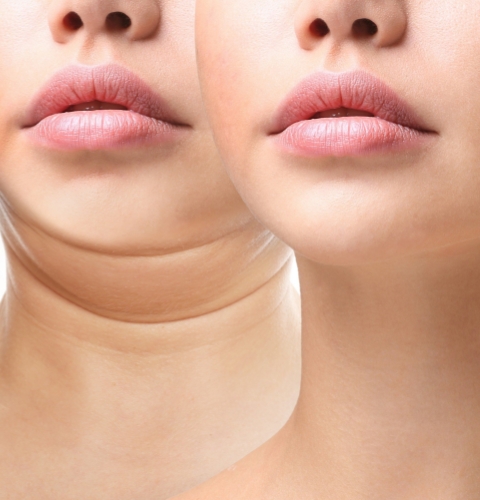
Chemical Peel: Safely Enhancing Skin Beauty
Dr. Pratiksha Jain, Associate Consultant Cosmetologist at SPARSH Hospital, Bengaluru, emphasizes the transformative benefits of chemical peels as a dermatologist-approved skincare therapy to rejuvenate the skin. This professional facial treatment delicately removes the outer skin layer, harnessing the potency of alpha hydroxy acids (AHAs), beta hydroxy acids (BHAs), and polyhydroxy acids (PHAs) derived from fruits, plants, or organic sources.
Dr. Pratiksha highlights that chemical peels stimulate exfoliation and expedite cell turnover, nurturing the emergence of renewed skin cells. Addressing various skin concerns, this therapy unlocks the skin's inherent brilliance. However, she underscores the importance of consulting a trusted dermatologist for optimal results.
Initiating the skincare journey with lower concentration acids is advised by Dr. Pratiksha. Basic options like glycolic acid, lactic acid, and salicylic acid are prudent choices, particularly for concerns such as pigmentation and fine lines. Advanced peel combinations, incorporating pharmaceutical-grade acids, provide targeted solutions for deep wrinkles and acne scars, specifically tailored for Indian skin types. Consulting with a dermatologist is crucial to determine the appropriate chemical peel range for effective and measurable results.
Dr. Pratiksha emphasizes the significance of regular follow-ups to maintain the benefits of chemical peel treatments. Typically, 3 to 6 sessions at regular intervals align with the skin's natural rejuvenation cycle. Superficial peels address milder concerns, while deeper peels target issues like deep wrinkles or acne scars. Adding barrier repair treatments, such as medi facials, between sessions enhances skin health. Specialists can create a personalized plan for optimal and sustained outcomes through consultations.
Considering affordability, Dr. Pratiksha notes that the cost of chemical peels varies based on the type of peel and treated area, ranging from 1,500 INR to 10,000 INR. However, she strongly recommends consulting with an expert dermatologist to determine the most suitable peel for individual skin types.
Dr. Pratiksha emphasizes safety and precautions in chemical peel procedures. When performed by dermatologists, the process is effective and minimizes side effects. Temporary effects like redness, scabbing, and swelling are common and manageable. Precautions, including discontinuing active ingredients like retinol, avoiding physical exfoliation, and refraining from heavy makeup before the procedure, optimize results and minimize potential complications.
Post-procedure advice is crucial for optimal results and skin healing. Dr. Pratiksha advises avoiding soaps, makeup, and skincare with active ingredients for 48 hours post-peel. Utilizing broad-spectrum SPF, avoiding sun exposure, and refraining from activities causing excessive sweating are essential. Consistent adherence to these guidelines enhances chemical peel benefits and fosters a positive recovery.
In terms of pregnancy considerations, Dr. Pratiksha suggests that certain chemical peels with lactic acid and glycolic acid are generally safe during pregnancy and lactation. However, peels containing salicylic acid, retinol, and phenol should be avoided. Consulting with a treating physician before undergoing any chemical peel treatments during pregnancy is crucial, ensuring a personalized and safe approach that considers individual factors and promotes skin health and overall well-being.
In conclusion, while chemical peels are powerful for enhancing skin radiance, a responsible approach, guided by consultation with a dermatologist, ensures a tailored and effective therapy, guaranteeing measurable results.